316L Stainless Steel Sheet AISI 316L Cold Rolled SS Sheet Metal
Product Description
Alloys 316 (UNS S31600) and 316L (UNS S31603) are molybdenum-bearing austenitic stainless steels, which are more resistant to general corrosion and pitting/crevice corrosion than the conventional chromium-nickel austenitic stainless steels such as Alloy 304. These alloys also offer higher creep, stress-to-rupture, and tensile strength at elevated temperatures. In addition to excellent corrosion resistance and strength properties, the Alloys 316 and 316L Cr-Ni-Mo alloys also provide excellent fabricability and formability which are typical of the austenitic stainless steels.
It has a lower melting temperature than 304L coil, making it more suited for applications where the material may be exposed to higher temperatures before being processed into a component, such as welding or brazing.
316L stainless steel coils can be formed by rolling, drawing, or forging methods. It is used in many applications including: marine, chemical process equipment and food processing equipment.
Chemical Composition (%)
| Grade | C | Mn | Si | P | S | Cr | Ni | Mo |
| 316L | ≤0.03 | ≤2.0 | ≤1.0 | ≤0.045 | ≤0.03 | 16.0-18.0 | 10.0-14.0 | 2.0-3.0 |
Chemical Composition (%)
In most applications Alloy 316/316L has superior corrosion resistance to Alloy 304/304L. Process environments that do not corrode Alloy 304/304L will not attack this grade. One exception, however, is in highly oxidizing acids such as nitric acid where stainless steels containing molybdenum are less resistant. Alloy 316/316L performs well in sulfur containing service such as that encountered in the pulp and paper industry.
The alloy can be used in high concentrations at temperatures up to 120°F (38°C).
Alloy 316/316L also has good resistance to pitting in phosphoric and acetic acid. It performs well in boiling 20% phosphoric acid. The alloy can also be used in the food and pharmaceutical process industries where it is utilized to handle hot organic and fatty acids in an effort to minimize product contamination.
Alloy 316/316L performs well in fresh water service even with high levels of chlorides. The alloy has excellent resistance to corrosion in marine environments under atmospheric conditions.
The higher molybdenum content of Alloy 316/316L assures it will have superior pitting resistance to Alloy 304/304L in applications involving chloride solutions, particularly in an oxidizing environment.
In most instances, the corrosion resistance of Alloys 316 and 316L will be roughly equal in most corrosive environments. However, in environments that are sufficiently corrosive to cause intergranular corrosion of welds and heat-affected zones Alloy 316L should be used because of its low carbon content.
| Composition (Weight Percent) | CCT2 | CPT3 | ||||
| ALLOY | Cr | Mo | N | PREN1 | °F (°C) | °F (°C) |
| Type 304 | 18.0 | — | 0.06 | 19.0 | <27.5 (<-2.5) |
— — |
| Type 316 | 16.5 | 2.1 | 0.05 | 24.2 | 27.5 (-2.5) |
59 (15.0) |
| Type 317 | 18.5 | 3.1 | 0.06 | 29.7 | 35.0 (1.7) |
66 (18.9) |
| SSC-6MO | 20.5 | 6.2 | 0.22 | 44.5 | 110 (43.0) |
149 (65) |
Lowest Temperature (°F) at Which the Corrosion Rate Exceeds 5mpy
ps = pitting can occur
ps = pitting/crevice corrosion can occur
| CORROSION ENVIRONMENT |
Type 316L |
Type 304 |
2205 (UNS S32205) |
2507 |
| 0.2% Hydrochloric Acid | >Boiling | >Boiling | >Boiling | >Boiling |
| 1% Hydrochloric Acid | 86 | 86p | 185 | >Boiling |
| 10% Sulfuric Acid | 122 | — | 140 | 167 |
| 60% Sulfuric Acid | <54 | — | <59 | <57 |
| 96% Sulfuric Acid | 113 | — | 77 | 86 |
| 85% Phosphoric Acid | 203 | 176 | 194 | 203 |
| 10% Nitric Acid | >Boiling | >Boiling | >Boiling | >Boiling |
| 65% Niitric Acid | 212 | 212 | 221 | 230 |
| 80% Acetic Acid | >Boiling | 212p | >Boiling | >Boiling |
| 50% Formic Acid | 104 | ≤50 | 194 | 194 |
| 50% Sodium Hydroxide | 194 | 185 | 194 | 230 |
| 83% Phosphoric Acid + 2% Hydrofluoric Acid |
149 | 113 | 122 | 140 |
| 60% Nitric Acid + 2% Hydrocloric Acid |
>140 | >140 | >140 | >140 |
| 50% Acetic Acid + 50% Acetic Anhydride |
248 | >Boiling | 212 | 230 |
| 1% Hydrochloric Acid + 0.3% Ferric Chloride |
77p | 68p | 113ps | 203ps |
| 10% Sulfuric Acid + 2000ppm Cl- + N2 |
77 | — | 95 | 122 |
| 10% Sulfuric Acid + 2000ppm Cl- + SO2 |
<<59p | — | <59 | 104 |
| WPA1, High Cl- Content | ≤50 | <<50 | 113 | 203 |
| WPA2, High F- Content | ≤50 | <<50 | 140 | 167 |
| WPA | P2O5 | CL- | F- | H2SO4 | Fe2O3 | Al2O3 | SiO2 | CaO | MgO |
| 1 | 54 | 0.20 | 0.50 | 4.0 | 0.30 | 0.20 | 0.10 | 0.20 | 0.70 |
| 2 | 54 | 0.02 | 2.0 | 4.0 | 0.30 | 0.20 | 0.10 | 0.20 | 0.70 |




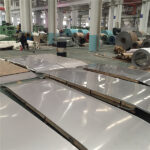
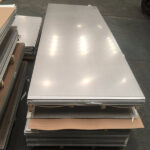
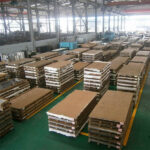
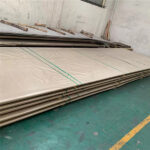
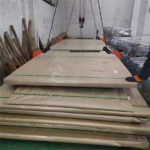

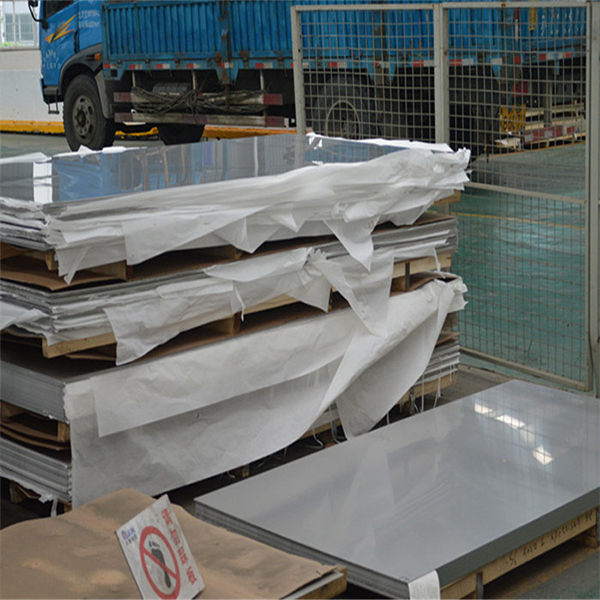

.jpg)



